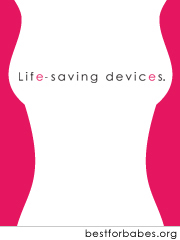First, it is important to begin expressing your milk for at least 120 minutes a day using a double electric hospital grade pump. These pumps can be rented from a local hospital. Pump 8-10 times a day for 15-20 minutes and use the techniques shown in the following video.
http://newborns.stanford.edu/Breastfeeding/MaxProduction.html
If you do not have access to a pump, you can use hand-expression. See the following links to learn hand-expression.
http://www.bfmedneo.com/BreastMassageVideo.aspx (from Breastfeeding Medicine of Northeast Ohio)
http://newborns.stanford.edu/Breastfeeding/HandExpression.html
http://ammehjelpen.no/handmelking?id=907
There are several options for feeding a non-latching newborn. One method is to spoon or cup-feed. This is easier in the early days when feeds are lower volume but is still possible when baby is taking in more volume. The following is a video showing how to cup-feed. After clicking on the link, scroll down to the second video which is in English.
http://ammehjelpen.no/koppmating?id=912
Milk intake increases over the first week. Babies feed 8-12 times a day and transfer approximately:
Day 1: 2-10 ml per feed
Day 2: 5-15 ml per feed
Day 3: 15-30 ml per feed
Day 4: 40 ml per feed
Day 5: 50 ml per feed
Day 6: 60 ml per feed
Over the course of the first month, baby’s intake increases to approximately 750 ml or 25 ounces per day. This amount remains stable until solids are introduced.
Other methods of feeding a non-latching baby are using a tube or syringe to finger feed or bottle-feeding. It is best to avoid bottles until baby learns to latch onto the breast, because the tongue and jaw movements used for breastfeeding are very different from those used to bottle-feed. However, if you do choose to use bottles, baby can still learn to breastfeed!
Spend as much time as possible in skin-to-skin contact with your baby and try a laid-back breastfeeding position. http://www.biologicalnurturing.com/ and see http://feedthebabyllc.comlatch-and-positioning/ and http://feedthebabyllc.comgetting-started/ for more help.
If baby is 1 week old and still not latching, you may want to try using a nipple shield. While using a nipple shield, be sure that your breasts are softening and that your baby is doing plenty of swallowing. You may need to express your milk after feeding if baby is not transferring milk well with the nipple shield. To determine if baby is transferring milk see, http://feedthebabyllc.comcare-plan-for-milk-supply/
CranioSacral Therapy is helpful to many infants who are having difficulty latching. This is a gentle manipulation of the plates of the skull and lower spine. During birth cranial sutures can impinge on cranial nerves, which can restrict baby’s tongue movement. Some babies improve their latch dramatically with just one visit to a Craniosacral Therapist.



